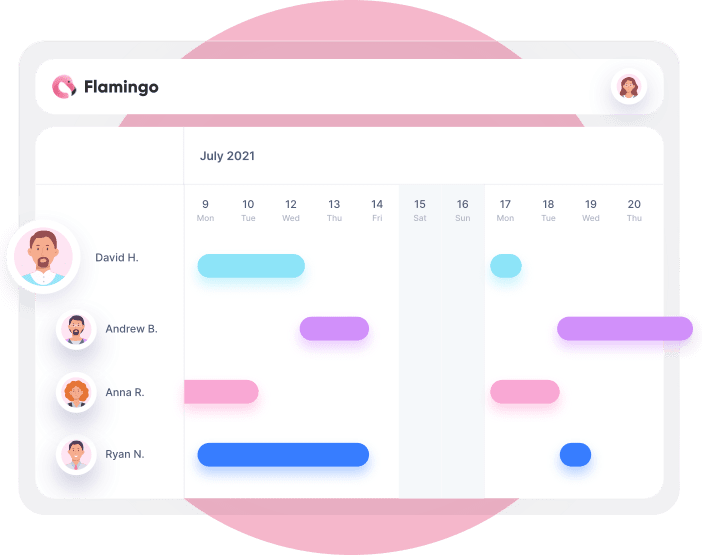
Flamingo is a leave management solution built for modern teams.
No more cluttered spreadsheets and manual data entry. Manage your entire team's leave, directly from Slack, and speed up your leave management workflow.
Learn moreIn this page, we’ll break down all you need to know about leave laws in The People’s Republic of China.
Read on to learn about employees’ rights in regards to paid time off/annual leave, sick leave, parental leave, national/public holidays, and more.
This page is intended for reference purposes only and does not constitute legal advice. Please see official government sources or consult a legal professional for actual legal advice.
After one year of employment (not just their current employer, but all employment in China), employees are entitled to paid annual leave.
Employees with 1-9 years work tenure are entitled to five days of annual leave.
Employees with 10-19 years tenure are entitled to 10 days of annual leave.
Employees with over 20 years tenure are entitled to 15 days annual leave.
This applies to full-time workers; part-time workers may not be entitled to annual leave.
Annual leave can carry over from one year to the next, but must be taken by the end of the following year.
Though employees can voluntarily carry over their vacation days from one year to the next, if their employer does not allow them to take their annual leave in the year it is given, their employer is required to compensate with 300% of their regular pay for each unused day of annual leave.
Learn more about Use It or Lose It policies here.
Employers in China must provide employees with paid sick leave.
The length of sick leave depends on the employee’s tenure and length of work experience, and also differs depending on the region/municipality.
Length varies from a maximum of three months to 24 months, and compensation for sick leave ranges from 60-100% of the employee’s regular wages (depending on the province).
China has seven public holidays, with the working week around each holiday altered to give a longer rest period. The dates of these holidays differ in most years, and are announced by the government in December each year.
| Date | Number of Days Off | Holiday |
|---|---|---|
| January 1 | 1 day | New Year’s Day |
| Varies (late January/early February) | 3 days (Chinese New Year’s Eve, 1st and 2nd days of 1st Lunisolar month) | Spring Festival (aka Chinese New Year) |
| 15 days after March Equinox | 1 day | Tomb-Sweeping Day |
| May 1 | 1 day | Labour Day |
| Varies – usually June | 1 day | Dragon Boat Festival |
| Varies – usually September | 1 day | Mid-Autumn Festival |
| 1 October | 3 days | National Day |
Public holidays are fully paid, and employees are entitled to triple pay if working on a public holiday.
Employees are entitled to 98 days of maternity leave, extended by 15 days for multiple births or under special circumstances. Maternity leave begins 15 days before the expected date of birth.
Maternity leave is paid by social security, if the employee has met the required threshold for participation in the social insurance scheme. If not, maternity pay is provided by the employer.
On top of the 98 days mentioned above, different regions may provide additional maternity leave entitlements (as well as specific rules on payouts, e.g. minimum requirements and maximum benefit amount).
Length and rules of paternity leave vary from region to region, generally anywhere from seven to 30 days. This is paid by the employer.
Some regions also provide parental leave/childcare leave, though this is not covered by national policy.
Employees in China generally get paid leave for the death of their parent, spouse, or child, lasting between one to three days depending on the region.
Some regions (Shanghai, for example), also provides bereavement leave for in-laws.
What is Bereavement Leave? Click here to learn more.
Employees in China are entitled to at least three days of paid leave when they get married. Most provinces offer additional marriage leave on top of this. Gansu and Shanxi provinces offer the longest marriage leave, with 27 additional days, for 30 days total. Hebei, Inner Mongolia, Jiangxi, Xinjiang and Yunan all offer 15+ additional days of marriage leave.

No more cluttered spreadsheets and manual data entry. Manage your entire team's leave, directly from Slack, and speed up your leave management workflow.
Learn more